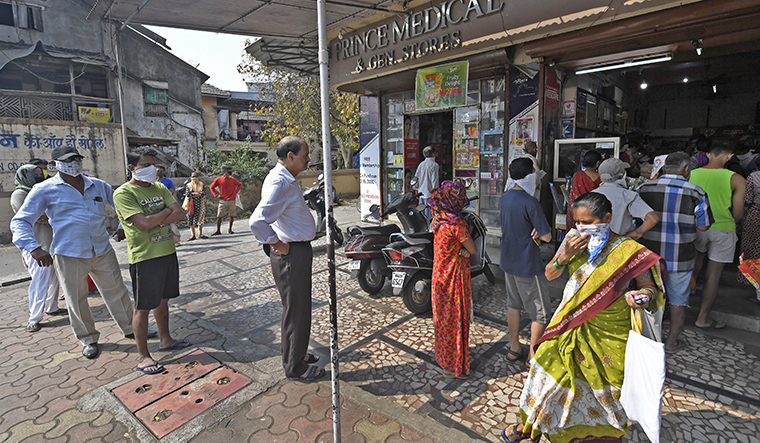The Union government may have extended the COVID-19 nationwide lockdown by another two weeks, starting from May 4, but some relaxations in economic activity and local travel based on zone-wise classification of districts have been allowed.
However, restaurants, cinema halls, shopping malls, educational institutions, trains, interstate buses, airlines, religious places will continue to remain shut.
Liquor and cigarette shops have been allowed to open in green and orange zones with strict social distancing protocol.
Under the new guidelines, movement of individuals, for all non-essential activities, shall remain strictly prohibited between 7pm to 7am. Persons above 65 years of age, persons with co-morbidities, pregnant women, and children below the age of 10 years, have been asked to stay at home, except for meeting essential requirements and for health purposes.
The extension in the lockdown has been on expected lines, as the government, on April 29, allowed the migrants, workers, students to return to their native places through special trains and buses, thus hinting that stringent measures will continue for some more time.
The lockdown 3.0 relaxations will apply on the basis of the classifications of the districts into red, orange and green zones. These are tedious set of guidelines which will require clarification and careful study by the local adminstrations.
Out-Patient Departments (OPDs) and medical clinics shall be permitted to operate in all three zones.
The strictest restrictions are for the containment zones within the Red and Orange districts. The government has asked the states to ensure 100 per cent coverage of Aarogya Setu app. The containment zones will have strict perimeter with no movement of people, but the authorities will ensure intensified house-to-house surveillance, home, institutional quarantining of persons based on their risk assessment, and clinical management.
ALSO READ: Centre releases list of Red, Orange and Green Zones
In the Red Zones, no rickshaws, autorickshaws, taxis, buses, barber shops, spas and saloons are allowed.
The activities allowed in the Red Zones is movement of individuals and vehicles for permitted activities. In a car, two people besides driver can travel, but no pillion rider in case of two-wheelers.
The new guidelines allow industrial establishments in urban areas, special economic zones, export-oriented units, industrial estates and industrial townships with access control have been permitted. Other industrial activities permitted are manufacturing units of essential goods, including drugs, pharmaceuticals, medical devices, their raw material and intermediates. Construction activities in urban areas have been limited to in-situ construction. Private offices can operate with upto 33 per cent strength as per requirement, with the remaining persons working from home.
As government has not allowed public transport, the efficacy of these relaxations will be debatable as to how employees and workers will be able to reach if they do not own a private vehicle.
As already directed shops in urban areas, for non-essential goods, are not allowed in malls, markets and market complexes. Only all standalone shops in neighbourhood are allowed.
All the relaxations given in the Red Zone will automatically be extended in the Orange and Green Zone.
The new guidelines allows taxis and cab aggregators like Uber and Ola to run with one passenger only to run in the Orange Zones. Inter-district movement of individuals and vehicles will be allowed for permitted activities only. Four-wheeler vehicles will have maximum two passengers besides the driver and pillion riding will be allowed on two-wheelers.
In the Green Zones, all activities are permitted except the limited number of activities which are prohibited throughout the country, irrespective of the zone. However, buses can operate with up to 50 per cent seating capacity and bus depots can operate with up to 50 per cent capacity. The Green Zones will be districts with either zero confirmed cases till date; or, no confirmed case in the last 21 days.
The classification of districts as Red Zones has been done on account of total number of active cases, doubling rate of confirmed cases, extent of testing and surveillance feedback from the districts.
The relaxations are not absolute or permanent as the classification of districts in different zones is done on weekly basis by Union health ministry. The states on their own cannot lower the classification from Red and Orange Zone, though they can add to it.
As per another classification, based on the spread of COVID-19 cases, the government has asked the states to divide a district in two parts, the municipal corporations, and those outside it, which roughly means urban and rural areas.
So, if the area outside the municipal boundary has reported no case for the last 21 days, it will be allowed to be classified as one stage lower than the overall classification of the district as either Red or Orange. Hence, this area will be classified as Orange, in case the district is overall Red; or as Green, in case the district is overall Orange, which means rural areas can have more economic activities.



